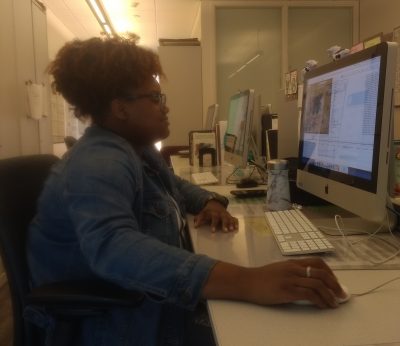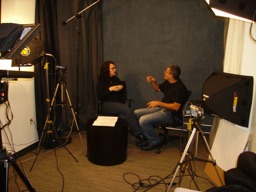Many of our lab’s presentations and papers are not associated with one of our current major projects. Here is a listing of recent output that falls in this category.
ID Gloss – Updated now in the SignBank project!
Much of our research involves the collection and transcription of videotaped sign language data. Different research labs have developed different conventions to follow for making transcriptions as consistent and comparable as possible. In order to facilitate sharing of data and consistent and systematic use of glosses, we built a database containing clips of common signs, along with the ID glosses we assigned to these signs, and additional information such as handshape, etc. Since not all groups use the same ID glosses, the database is constructed so that each group of users can input their own glosses for the same common set of signs.
This project was conducted with collaborators and graduate students Karen Alkoby, Julie Hochgesang, Marlon Kuntze, Gaurav Mathur, Gene Mirus, Carla Morris (all Gallaudet University); Richard Meier, David Quinto-Pozos, Leah Geer (University of Texas, Austin); Jon Henner (Boston University); Pedro Pascual Villanueva (University of Connecticut).
Cross-Language Early Syntax Study (CLESS)
The CLESS project questioned how children can acquire their native language(s). This project’s goal was compare the early acquisition of syntax across a variety of languages using comparable naturalistic spontaneous production data from children ages 1;6 – 3;6. We aimed to know more about the mechanisms that make it possible for children to acquire whatever language they are exposed to, rapidly and with remarkably few errors.
 Part of the study explored similarities and differences between the acquisition of American Sign Language and Brazilian Sign Language, for Deaf children with Deaf parents. With a large number of collaborators and graduate students, we also collected data on the acquisition of American English, Japanese, Spanish (Castillian & Puerto Rican), and Brazilian Portugese. Some of the corpora (videos and/or transcripts) have been shared through CHILDES, or through personal contacts.
Part of the study explored similarities and differences between the acquisition of American Sign Language and Brazilian Sign Language, for Deaf children with Deaf parents. With a large number of collaborators and graduate students, we also collected data on the acquisition of American English, Japanese, Spanish (Castillian & Puerto Rican), and Brazilian Portugese. Some of the corpora (videos and/or transcripts) have been shared through CHILDES, or through personal contacts.
Collaborators included William Snyder (University of Connecticut), Keiko Murasugi (Nanzan University), Koji Sugisaki (Mie University), Ronice Quadros (Universidade Federal de Santa Catarina).
The Acquisition of American Sign Language by Deaf Children with Delayed Input
Only about 5% of Deaf children are born to Deaf, signing families. For the rest, language development only begins later when the child is exposed to an accessible language. This project investigated the acquisition of ASL by two unrelated Deaf children who started learning ASL as a first language around the age of 6 years. These children were able to develop intellectually, and they learned many aspects of ASL, though their knowledge of certain aspects of ASL was significantly affected by their linguistic delay. This project showed that the mind’s readiness for language begins to change as early as age six and emphasized the importance of early linguistic input for all children.
This project was conducted in collaboration with Stephanie Berk (Washington University, St. Louis).
Structure of ASL and Libras
 We worked to better understand the grammatical structure of American Sign Language (ASL) and Brazilian Sign Language (Libras). The two languages have completely different vocabulary. When it comes to morpho-syntactic structure, they have both similarities and differences. By comparing both the similarities and differences, we gained a better understanding of the nature of the human capacity for language.
We worked to better understand the grammatical structure of American Sign Language (ASL) and Brazilian Sign Language (Libras). The two languages have completely different vocabulary. When it comes to morpho-syntactic structure, they have both similarities and differences. By comparing both the similarities and differences, we gained a better understanding of the nature of the human capacity for language.
Aspects of this project were conducted with Ronice Müller de Quadros (Universidade Federal de Santa Catarina), and with Richard Meier (University of Texas at Austin).